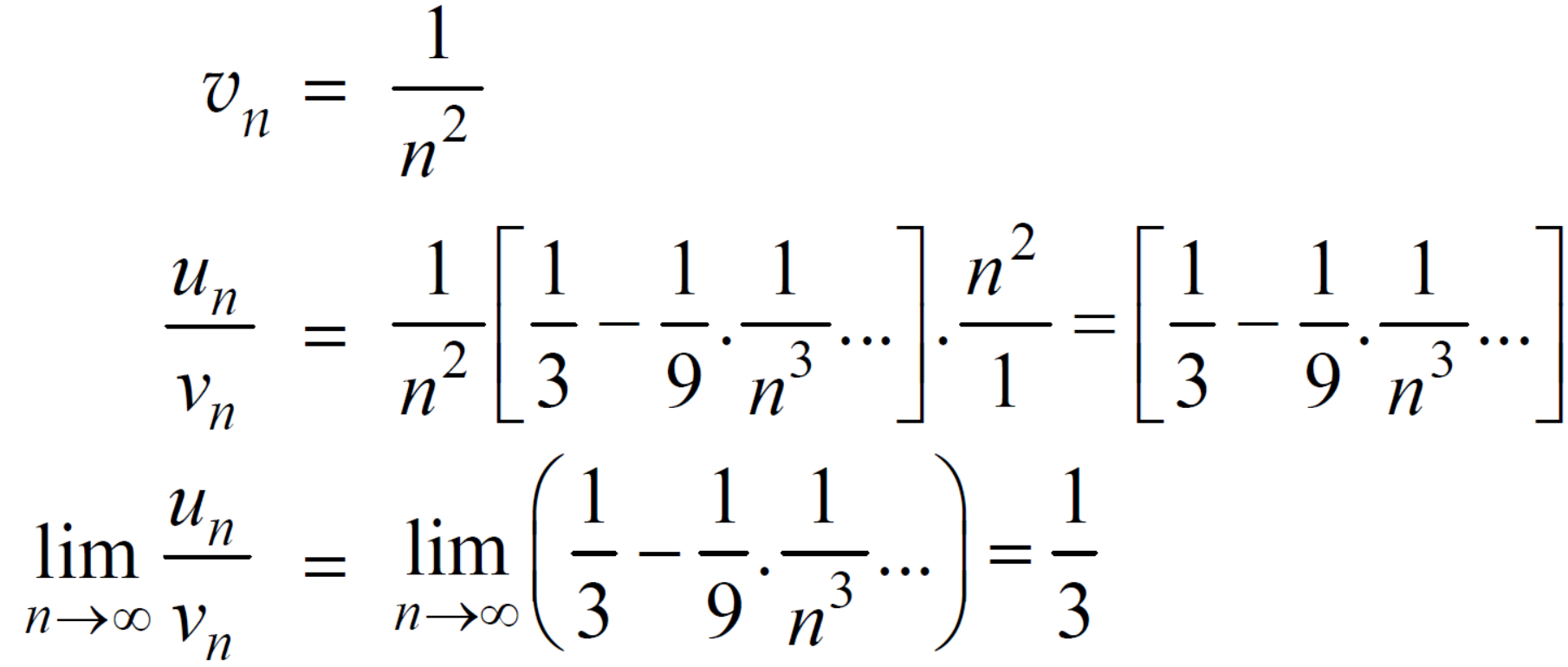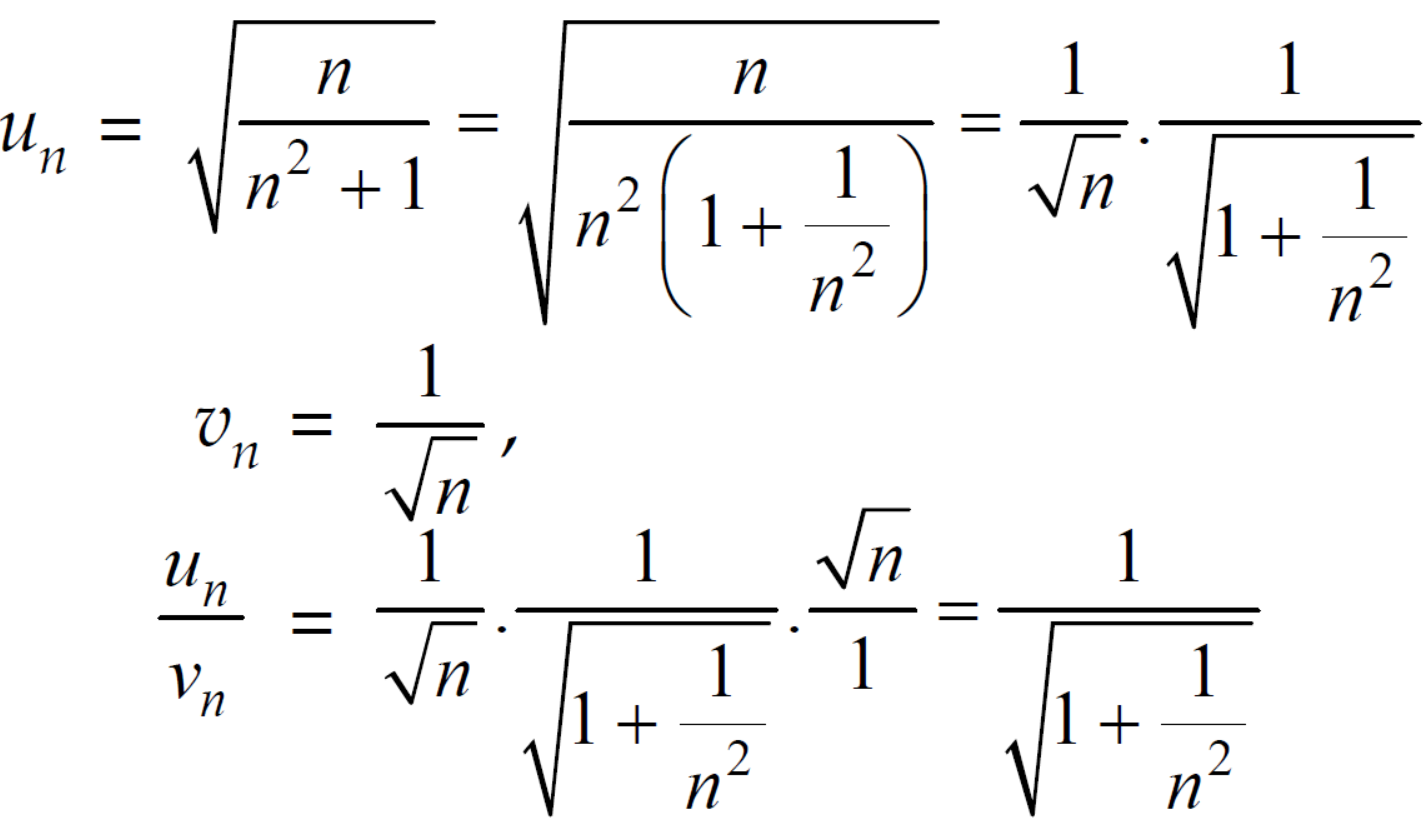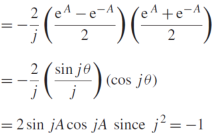Unit - 3
Sequences & Series
Sequence –
A function f: N  , where S is a non-empty set, is called sequence, for each nϵN.
, where S is a non-empty set, is called sequence, for each nϵN.
The sequence is written as f (1), f (2), f (3), f (4)………. f(n).
Any sequence f(n) can be denoted as <f(n)> or {f(n)} or (f(n)).
Suppose f(n) = 
Then it can be written as -  and can be denoted as <
and can be denoted as < > or {
> or { } or (
} or ( )
)
 is the n’th term of the sequence.
is the n’th term of the sequence.
Example: suppose we have a sequence – 1, 4, 9, 16 ,…….. and its n’th term is 
This sequence can be written as - < >
>
Example:  its n’th term will be
its n’th term will be  .and can be written as <
.and can be written as < >
>
Types of sequences –
1. Finite sequence- A sequence which has finite number of terms is called finite sequence.
2. Infinite sequence- A sequence which is not finite, called infinite sequence.
Limit of a Sequence- A sequence < > is said to tend to limit “l”, when given any positive number ‘ϵ’, however small, we can always find an integer ‘m’ such that |
> is said to tend to limit “l”, when given any positive number ‘ϵ’, however small, we can always find an integer ‘m’ such that |  – l| < ϵ, for every for all, n≥m, and we can define this as follows,
– l| < ϵ, for every for all, n≥m, and we can define this as follows,

Example: If  , then the limit of
, then the limit of  will be,
will be,
 =
=  =
=  = ½
= ½
Hence the limit of the sequence is 1/2.
Some important limits to remember-









Convergent sequence- A sequence Sn is said to be convergent when it tends to a finite limit. That means the limit of a sequence Sn will be always finite in case of convergent sequence.
Divergent sequence- when a sequence tends to ±∞ then it is called divergent sequence.
Oscillatory sequence- when a sequence neither converges nor diverges then it is called oscillatory sequence.
Note- a sequence which neither converges nor diverges, is called oscillatory sequence.
A sequence converges to zero Is called null.
Example-1: consider a sequence 2, 3/2, 4/3, 5/4, …….. here Sn = 1 + 1/n
Sol. As we can see that the sequence Sn is convergent and has limit 1.
According to def.


Example-2: consider a sequence Sn = n² + (-1) ⁿ.
Sol. Here we can see that, the sequence Sn is divergent as it has infinite limit.


Example: suppose  , here the sequence is said to be oscillate. Because it is between -2 and 2.
, here the sequence is said to be oscillate. Because it is between -2 and 2.
Series
Infinite series- If  is a sequence, then
is a sequence, then  is called the infinite series.
is called the infinite series.
It is denoted by  .
.
Examples of infinite series-


Convergent series - suppose n→∞, Sn → a finite limit ‘s’, then the series Sn is said to be convergent.
We can denote it as,

Divergent series - when Sn tends to infinity then the series is said to be divergent.

Oscillatory series- when Sn does not tend to a unique limit (finite or infinite), then it is called Oscillatory series.
Properties of infinite series –
1. the convergence and divergence of an infinite series is unchanged addition or deletion of a finite number of terms from it.
2. if positive terms of convergent series change their sign, then the series will be convergent.
3. let  converges to s, let k be a non-zero fixed number then
converges to s, let k be a non-zero fixed number then  converges to ks.
converges to ks.
4. let  converges to ‘l’ and
converges to ‘l’ and  converges to ‘m’.
converges to ‘m’.
Example-1: check whether the series  is convergent or divergent. Find its value in case of convergent.
is convergent or divergent. Find its value in case of convergent.
Sol. As we know that,
Sn = 
Therefore,
Sn = 
Now find out the limit of the sequence,
 = ∞
= ∞
Here the value of the limit is infinity, so that the series is divergent as sequence diverges.
Example-2: check whether the series  is convergent or divergent. Find its value in case of convergent.
is convergent or divergent. Find its value in case of convergent.
Sol. The general formula for this series is given by,
Sn =  =
=  )
)
We get,
 ) = 3/2
) = 3/2
Hence the series is convergent and its values is 3/2.
Example-3: check whether the series  is convergent or divergent.
is convergent or divergent.
Sol. The general formula can be written as,

We get on applying limits,
 ) = 3/4
) = 3/4
This is the convergent series and its value is 3 / 4
Example-4: check whether the following series is convergent or divergent. If convergent, find its value.

Sol. n’th term of the series will be,



 ] = ½
] = ½
The series  will be
will be
1. Convergent if the value of p is: p>1
2. Divergent if the value of p is: p≤1
Proof;
Let p>1


Similarly,


And so on.
Adding we get,


The right-hand side of the above inequality is an infinite geometric series, the sum of the geometric series is finite hence the given series is convergent
Example-1: Test the convergence of the following series:

Sol.



Here we take,


Which not zero and finite,
So, by comparison test,  and
and  both converges or diverges, but by p-series test
both converges or diverges, but by p-series test

Is convergent. so that  is convergent.
is convergent.
Example-2: Test the convergence of the given series:

Sol. Here,

Take,

 is divergent by p-series test. (p = 0 <1)
is divergent by p-series test. (p = 0 <1)
Example-3: Test the convergence of the series:

Sol.

By p-series test,

Is convergent (p = 3>1).
Comparison test-
Statement-
Suppose we have two series of positive terms  and
and  then,
then,
 , where k is a finite number, then both series converges or diverges together.
, where k is a finite number, then both series converges or diverges together.
Proof- we know that by the definition of limits, there exist a positive number epsilon(ε)
Which is very small. Such that
According to definition (comparison test)
| |< ε for n>m, that means
|< ε for n>m, that means
k-ε <  for n>m
for n>m
Ignoring the first m terms of the series,
We get
k-ε <  for n>m for all n ………………..(1)
for n>m for all n ………………..(1)
there will be two cases-
Case-1:  is convergent, then
is convergent, then
 (
( ) = r (say), where r is finite number
) = r (say), where r is finite number
From (1),

 (
( )<
)< (
( ) =
) = 
Therefore  is also convergent.
is also convergent.
Case-2:  is divergent, then
is divergent, then
 (
( )→∞ …………………………. (2)
)→∞ …………………………. (2)
From eq. (1)


Then
 (
( )<
)< (
( )
)
From (2)
 (
( )→∞
)→∞
Hence,  is also divergent.
is also divergent.
Example: Test the convergence of the following series.

Sol. We have 
First, we will find  and the
and the 


And

Here, we can see that, the limit is finite and not zero,
Therefore,  and
and  converges or diverges together.
converges or diverges together.
Since  is of the form
is of the form  where p = 2>1
where p = 2>1
So that, we can say that,
 is convergent, so that
is convergent, so that  will also be convergent.
will also be convergent.
Example: Test the convergence of the following series

Sol. Here we have the series,

Now,


Now compare 


We can see that the limit is finite and not zero.
Here  and
and  converges or diverges together since,
converges or diverges together since,
 is the form of
is the form of  here p = 1,
here p = 1,
So that,
 is divergent then
is divergent then  is also divergent.
is also divergent.
Example: Show that the following series is convergent.

Sol.


Suppose,


Which is finite and not zero.
By comparison test  and
and  converge or diverge together.
converge or diverge together.
But,

Is convergent. So that  is also convergent.
is also convergent.
Example: Test the series:

Sol. The series is,

Now,

Take,

Which is finite and not zero.
Which is finite and not zero.
By comparison test  and
and  converge or diverge together.
converge or diverge together.
But,

Is divergent. (p = ½)
So that  is divergent.
is divergent.
D-Alembert’s ratio test
Statement- suppose  is a series of positive terms such that
is a series of positive terms such that  then,
then,
1. if k<1, the series will be convergent.
2. if k>1, then the series will be divergent.
Proof: Proof:
Case-1:

We know that from the definition of limits, it follows


But,

Is the finite quantity. So  is convergent.
is convergent.
Case-2:

There could be some finite terms in starting which will never satisfy the condition,

In this case we can find a number ‘m’,

Ignoring the first ‘m’ terms, if we write the series as

We have, in this case




So that  is divergent.
is divergent.
Example-1: Test the convergence of the series whose n’th term is given below-
n’th term = 
sol. We have  and
and 
by D’Alembert ratio test,

So that by D’Alembert ratio test, the series will be convergent.
Example-2: Test for the convergence of the n’th term of the series given below-

Sol. We have,



Now, by D’Alembert ratio test  converges if
converges if  and diverges if
and diverges if 
At x = 1, this test fails.
Now, when x = 1


The limit is finite and not zero.
Then by comparison test,  converges or diverges together.
converges or diverges together.
Since  is the form of
is the form of  , in which
, in which 
Hence  diverges then
diverges then  will also diverge.
will also diverge.
Therefore, in the given series  converges if x<1 and diverges if x≥1
converges if x<1 and diverges if x≥1
Power series
A series of the form 
Where all the ‘a’ are independent of x, is known as power series in x
Interval for convergence-
In this power series-

D’Alembert’s ratio test-

If  , then by ratio test, the power series is convergent, when
, then by ratio test, the power series is convergent, when  is less than 1.
is less than 1.
Or in other way if |x|<1/ then the series converges and diverges for other values.
then the series converges and diverges for other values.
Thus, the interval of convergence of power series is- 
Example-1: If the series  converges, then find the value of x.
converges, then find the value of x.
Sol. Here 
Then,


By D’Alembert’s ratio test the series is convergent for |x|<1 and divergent if |x|>1.
So, at x = 1
The series becomes- 
At x = -1

This is an alternately convergent series.
This is also convergent series, p = 2
Here, the interval of convergence is 
Example-2: If the series  converges, then find the value of x.
converges, then find the value of x.
Sol. Here

Then,


By D’Alembert’s ratio test the series is convergent for | |<1 or |1-x|>1
|<1 or |1-x|>1
Or 
At x = 0, the series becomes-  which is divergent harmonic series.
which is divergent harmonic series.
At x = 2, the series becomes- 
It is an alternate series which is convergent by Leibnitz rule.
So that the series  .
.
Taylor’s Theorem-
If f (x + h) is a function of h which can be expanded in the ascending powers of h and is differentiable by any number of times with respect to h, then-
 + …….+
+ …….+  + ……..
+ ……..
Which is called Taylor’s theorem.
If we put x = a, we get-
 + …….+
+ …….+  + …….. (1)
+ …….. (1)
Maclaurin’s Theorem-
If we put a = 0 and h = x then equation (1) becomes-
 + …….
+ …….
Which is called Maclaurin’s theorem.
Note – if we put h = x - a then there will be the expansion of F(x) in powers of (x – a)
We get-
 + …….
+ …….
Example-1: Express the polynomial  in powers of (x-2).
in powers of (x-2).
Sol. Here we have,
f(x) = 
differentiating the function w.r.t. x-
f’(x) = 
f’’(x) = 12x + 14
f’’’(x) = 12
f’’’’(x)=0
now using Taylor’s theorem-
 + ……. (1)
+ ……. (1)
Here we have, a = 2,
Put x = 2 in the derivatives of f(x), we get-
f (2) = 
f’ (2) = 
f’’ (2) = 12(2) +14 = 38
f’’’ (2) = 12 and f’’’’ (2) = 0
now put a = 2 and substitute the above values in equation (1), we get-



Taylor’s theorem for functions of two variables-
Suppose f (x, y) be a function of two independent variables x and y. then,
 + ……………
+ ……………
Maclaurin’s series is the special case of Taylor’s series-
When we put a = 0 and b = 0 (about origin) in Taylor’s series, we get-
 + ……………
+ ……………
Example-2: Expand f (x, y) =  in powers of x and y about origin.
in powers of x and y about origin.
Sol. Here we have the function-
f (x, y) = 
Here, a = 0 and b = 0 then
f (0, 0) = 
now we will find partial derivatives of the function-
















Now using Taylor’s theorem-
 +………
+………
Suppose h = x and k = y, we get
 +…….
+…….
=  +……….
+……….
Example-3: Find the Taylor’s expansion of  about (1, 1) up to second degree term.
about (1, 1) up to second degree term.
Sol. We have,

At (1, 1)
















Now by using Taylor’s theorem-
 ……
……
Suppose 1 + h = x then h = x – 1
1 + k = y then k = y - 1
 ……
……
 =
= 
 ……..
……..
Let’s first define the exponential functions-
A function which contains  where e is the constant, called an exponential function.
where e is the constant, called an exponential function.
Here ‘e’ is the exponent which has an approximate value 2.7183
The power series for 
The value of  can be defined in terms of the following power series:
can be defined in terms of the following power series:

If we obtain an actual value of  by adding all the terms of the series, then the series is said to be convergent.
by adding all the terms of the series, then the series is said to be convergent.
The more terms we take in the series, the closer will be the value of  to its actual value.
to its actual value.
Example: Find the value of 5 , correct to five decimal places by using the power series for
, correct to five decimal places by using the power series for  .
.
Sol. As we know that the exponential series is-





Here we get-

Now

Example: Expand  as far as the term in
as far as the term in  .
.
Sol. We know that the power series for  is-
is-

Here we have to find- 
So that-



On solving, we get-


As we know that,

And 
By adding these equations-

And subtracting (2) from (1), we get-

Note- 
Example-1: Verify 
Sol. As we know that 
And 
Hence,

 and
and 


That means,

The following function is a logarithmic function-

‘a’ is any value which is greater than 0, except 1
The natural logarithmic function is-

The value of e = 2.71828182….
Properties of logarithms-
1.
2. 
3. 
4.  then x = y
then x = y
Example: Simply the logarithm 
Sol. We can write this as-

= 3
Example: Simplify 
Sol. We know that-

So that


Sine series-
If it is required to expand the function f(x) as a sin series in 0 < x < c

Where,

Cosine series-



Example- Find a Fourier series for
 ;
; 
Solution:
Here
 ;
; 
Since f(x) is even function hence 
 Its Fourier series is
Its Fourier series is
 … (1)
… (1)
Where










Hence equation (1) becomes,

Example- Find half range cosine series of  in the interval
in the interval  and hence deduce that
and hence deduce that
a) 
b) 
Solution:
Here
 ;
; 
Hence, it’s half range cosine series is,
 … (1)
… (1)
Where











Hence equation (1) becomes,


 … (2)
… (2)
Put x = 0, we get


Hence the result
Put  we get,
we get,

i.e., 
The Parseval’s theorem can be stated as-

Proof: we know that

Multiply this equation by f(x), we get-

Integrate from –c to +c. we get-

We get on integrating-

Which is the Parseval’s formula.
Example-1: Show that  by using sine series for f(x) = 1 in 0<x<π
by using sine series for f(x) = 1 in 0<x<π
Sol. We know that the sine series is-




= 0 if n is even.
Then the sine series is-





So that-
 Proved.
Proved.
Example-2: Prove that for 0 < x < 
1. 
2. 
Sol. 1. Half range series,

= 
= 0 when n is odd
So that-


Now by Parseval’s formula-



So that-

References:
1. G.B. Thomas and R.L. Finney, Calculus and Analytic Geometry, 9th Edition, Pearson, Reprint, 2002.
2. Erwin Kreyszig, Advanced Engineering Mathematics, 9th Edition, John Wiley & Sons, 2006.
3. Veerarajan T., Engineering Mathematics for First Year, Tata Mcgraw-Hill, New Delhi, 2008.
4. Ramana B.V., Higher Engineering Mathematics, Tata Mcgraw Hill New Delhi, 11th Reprint, 2010.
5. D. Poole, Linear Algebra: A Modern Introduction, 2nd Edition, Brooks/Cole, 2005.